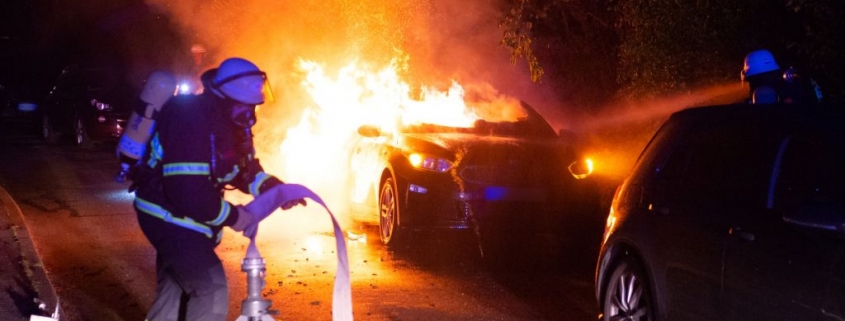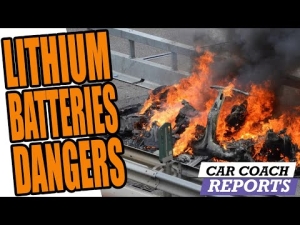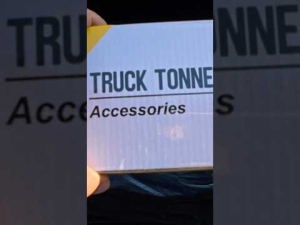Tesla Fires Are Notoriously Hard to Put out Due to Their Batteries
When it comes to car safety, vehicle fires are a rare but scary occurrence. In the past, the source of vehicle fires may commonly have been a result of a collision of some kind. Today, however, with the popularity of electric vehicles increasing, instances of EVs catching fire due to faults or other malfunctions quickly make headlines. Tesla is one automaker that frequently makes the news when a model catches fire. What’s more, due to the unique chemical makeup of lithium-ion batteries, which power Teslas among other EVs, these fires are difficult to extinguish.
EVs are not necessarily more prone to catching fire
As CNN Business reports, Tesla purports that gas-powered vehicles are 11 times more likely to catch fire than EVs like Teslas. CNN also goes on to discuss that in an investigation that the nonprofit research firm Battelle did for the National Highway Traffic Safety Administration (NHTSA), it deduced that the number of fires from lithium-ion batteries in EVs was roughly the same or slightly less than fires in gas-powered cars.
Tesla models and EVs still have a significant issue
Theoretically speaking, electric vehicles aren’t more prone to catching fire when compared to their internal combustion counterparts. The concern is that once these fires start, they are, in effect, chemical fires that are difficult to extinguish safely. The batteries themselves aren’t faulty, but the concern is the high voltage needed to charge these batteries and the high heat resulting from running the car.
On top of that high heat, these batteries can burn for much longer due to their chemical composition. According to SFist, Tesla fires take upwards of 28,000 gallons of water to put out. Fires burning for longer durations also means that Tesla fires result in more resources from firefighters who need to spend hours extinguishing the blaze.
Another issue is that lithium-ion batteries also do not typically ignite right away should there be an issue. Gasoline, on the other hand, will ignite at the moment it sparks. That delay for EV batteries catching fire, CNN Business says, means that some lithium-ion batteries might sustain damage at one time and place and then ignite sometime later at a moment’s notice.
EVs are still the safer option overall
When they are compared with gas-powered vehicles, EVs are still the safer choice. An NHTSA study concluded that consequences of lithium-ion battery fires are fewer because of the relatively small flammable chemicals released when the battery fails or is damaged.
What’s more, Teslas’ systems are designed to alert drivers of impending battery failures with enough time for the driver to pull over and exit the vehicle. Tesla assures drivers in its blog that firewalls are in place surrounding the battery and its housing or compartment meant to help keep the fire from spreading to the cockpit and affecting drivers and occupants.
Furthermore, it is because of their batteries and driver assistance technology that EVs are becoming more popular. EVs are undoubtedly the future for cars, and more work will be put into perfecting technologies and coping with and anticipating battery and safety issues. As such, EVs will continue to grow in terms of both safety features and ownership.
RELATED: More Chevy Bolt Fires: GM Quietly Buying Them Back
The post Tesla Fires Are Notoriously Hard to Put out Due to Their Batteries appeared first on MotorBiscuit.







